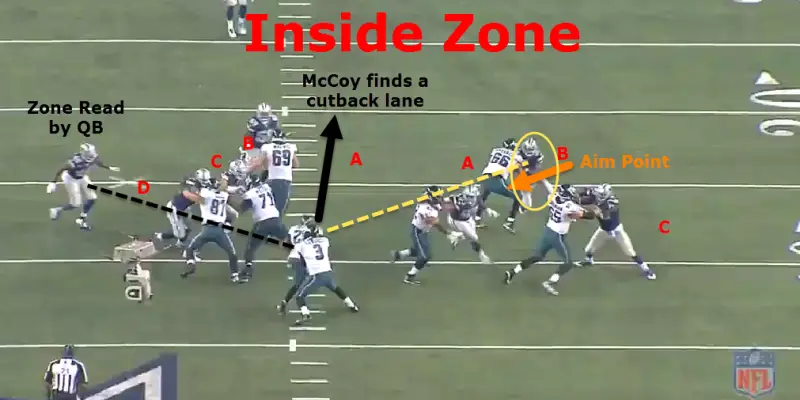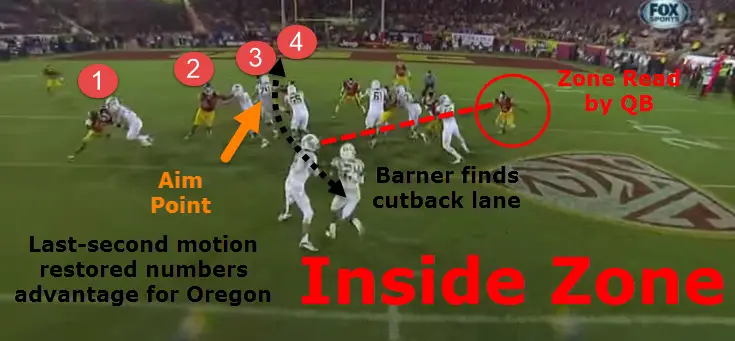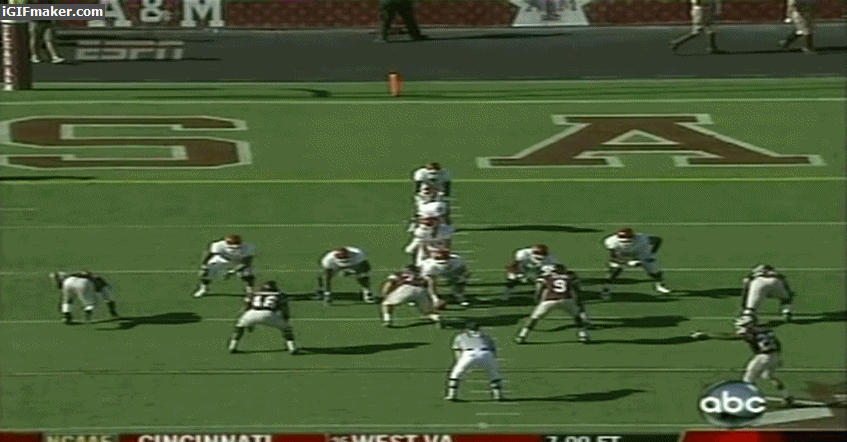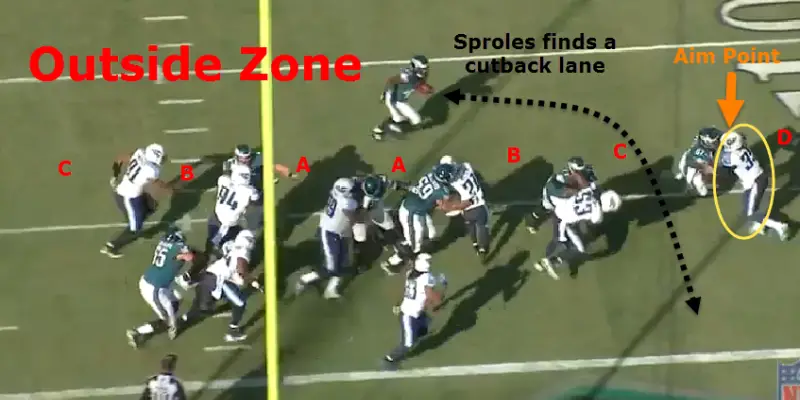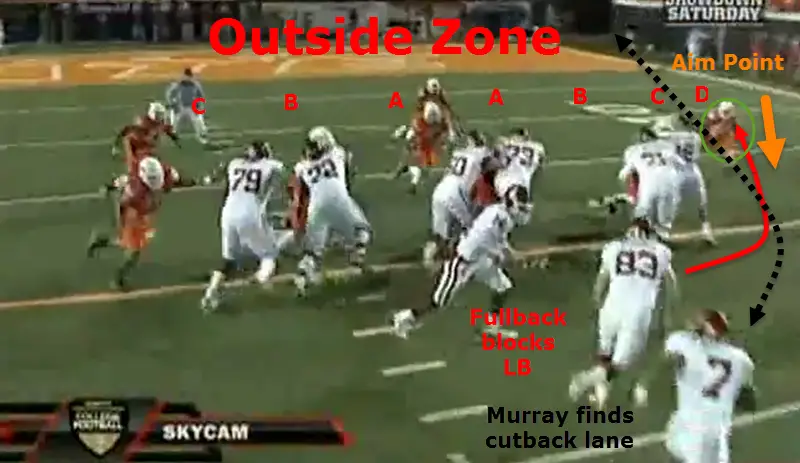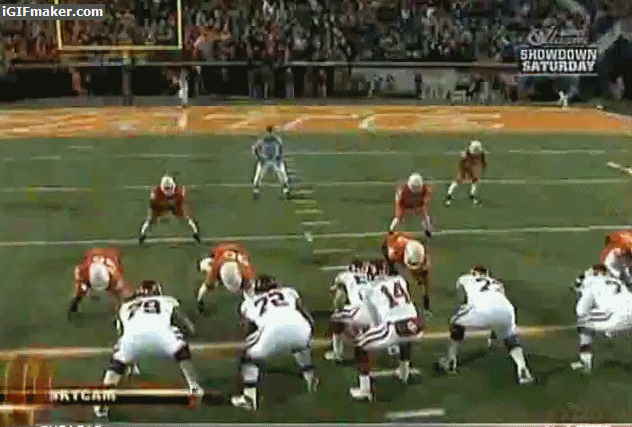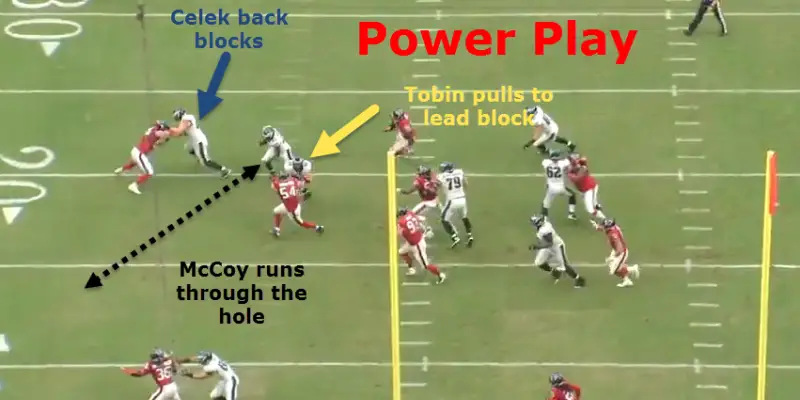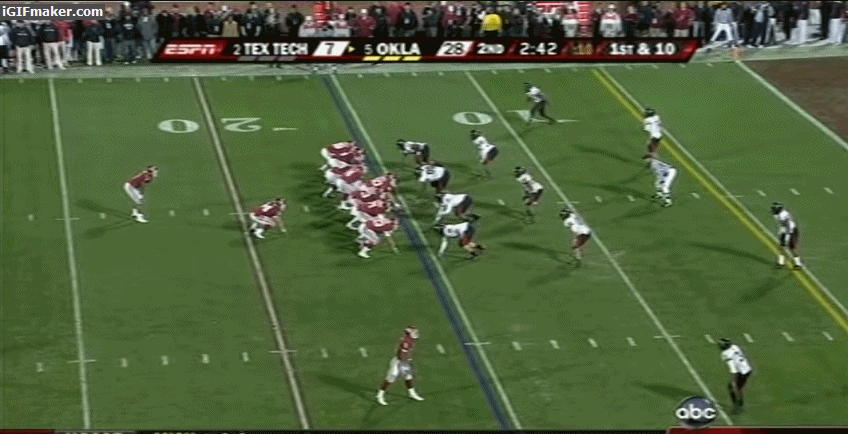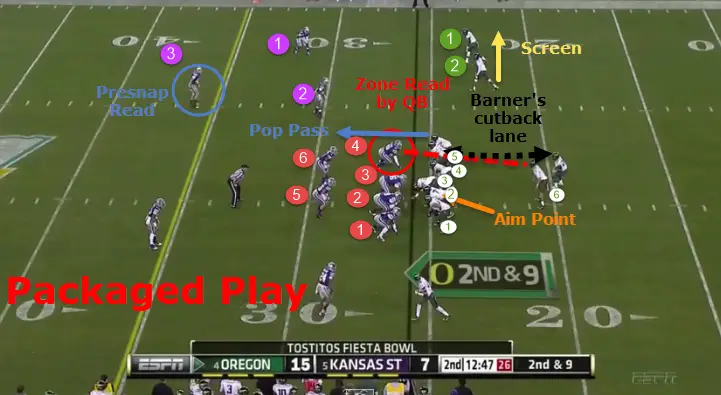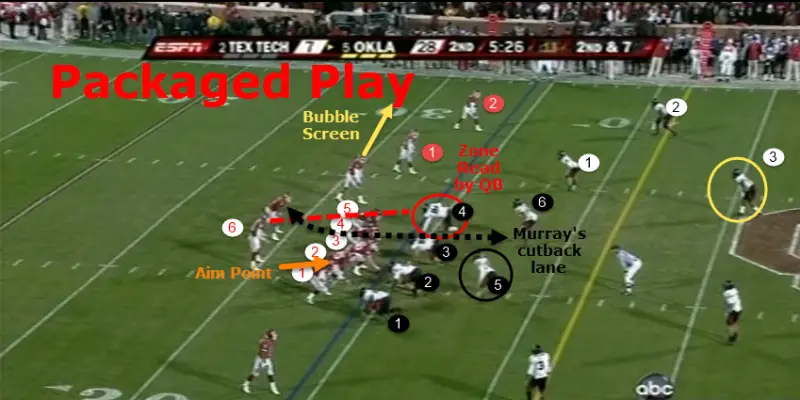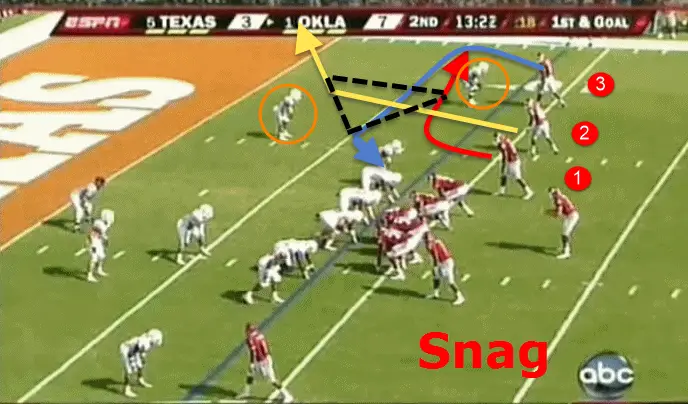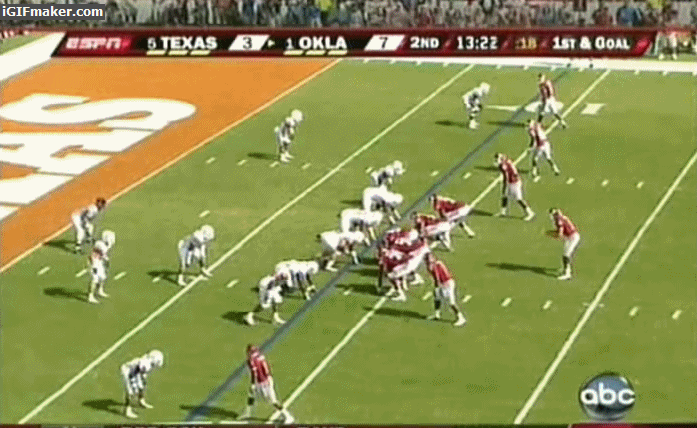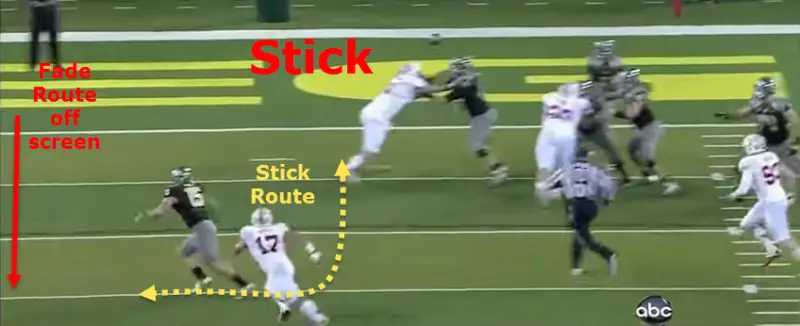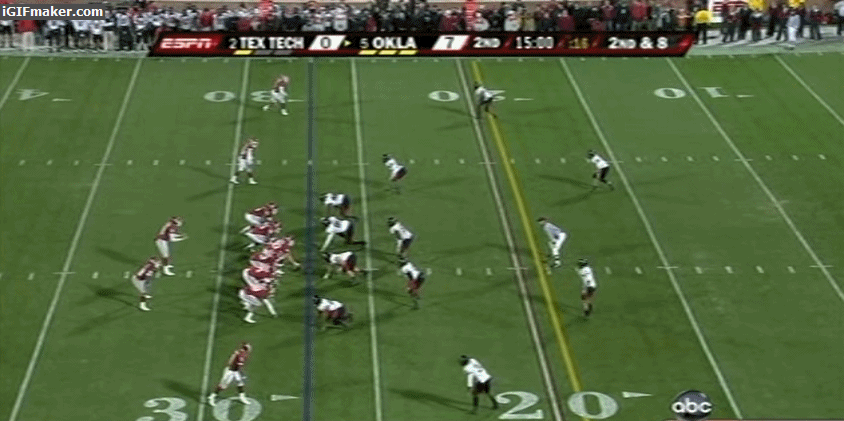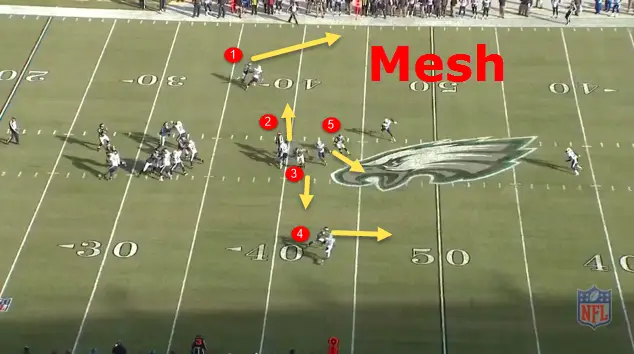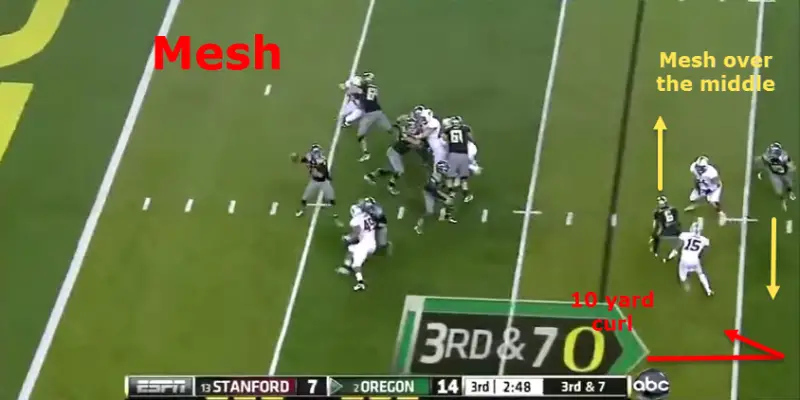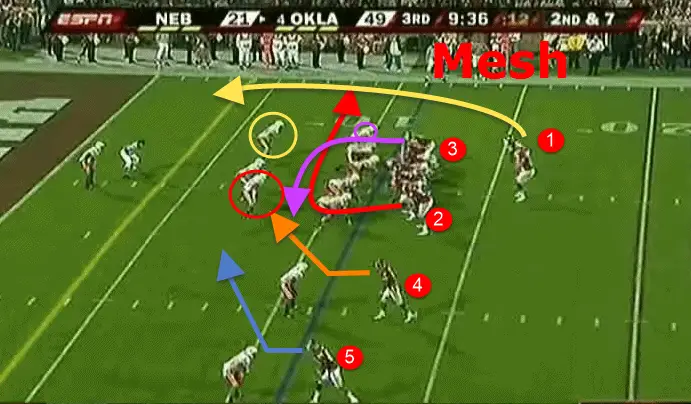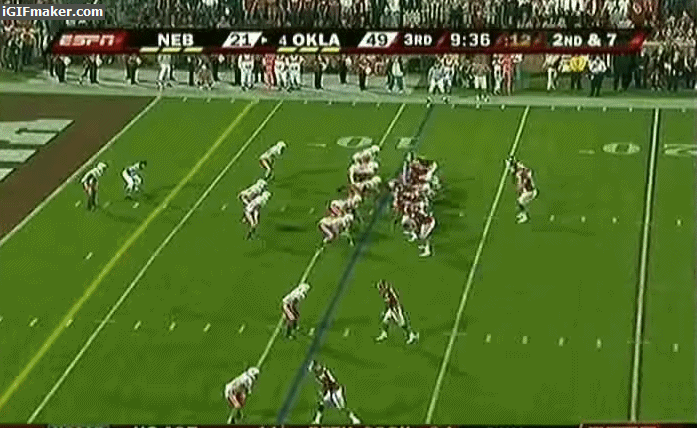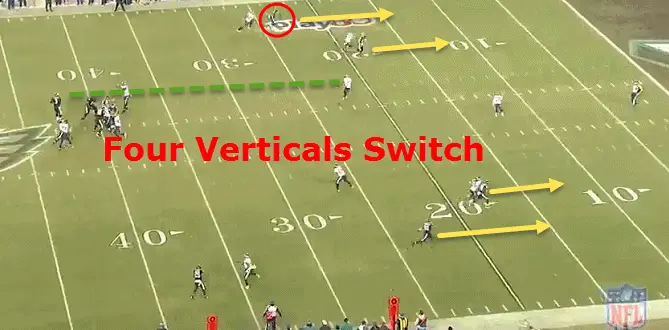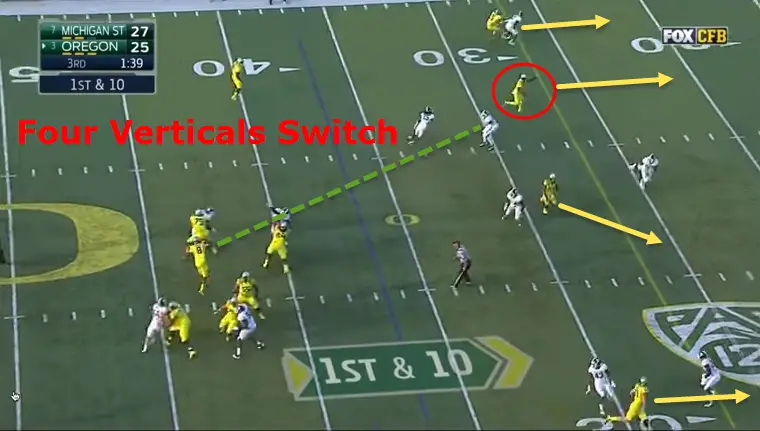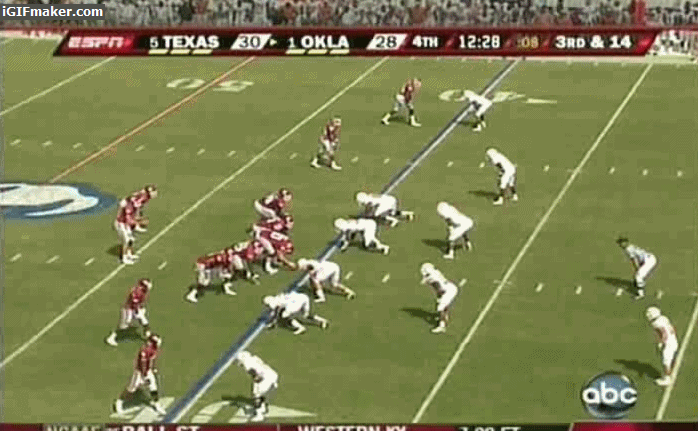Judging by the numbers, the Philadelphia Eagles had one of the best NFL offenses last season. They ranked third in scoring, fifth in total yards, sixth in passing yards, and ninth in rushing yards. However, PhillyVoice writer Jimmy Kempski persuasively argues the fast-tempo positively skewed the Eagles’ offensive statistics. Apparently, Eagles head coach Chip Kelly also decided the numbers didn’t add up, so he boldly traded away quarterback Nick Foles and running back LeSean McCoy. But if last season’s numbers weren’t good enough, who could possibly lift the offense to meet Kelly’s standards?
To answer this question, Kelly looked back to the college game — beyond his own Oregon Ducks teams — and saw the future of his Philadelphia Eagles in the 2008 Oklahoma Sooners team that contended in the BCS National Championship Game. Under Sooners head coach Bob Stoops and offensive coordinator Kevin Wilson (now head coach of the Indiana Hoosiers), quarterback Sam Bradford and running back DeMarco Murray helped Oklahoma lead the NCAA in scoring and number of plays. The Sooners used a stunningly similar playbook and fast-tempo to the one the Eagles will use this season.
Bradford and Murray fill the void left by Kelly’s decision to move on from Foles and McCoy. Their experience at Oklahoma suggests Kelly had good reason to see this duo as excellent scheme fits. Fans looking for parallels in the college game to the 2015 Eagles offense should look to Norman, Oklahoma, as much as Eugene, Oregon.
Run Game
Kelly and Wilson emphasize simplicity by focusing their run game on three plays: inside zone, outside zone, and power. The linchpin of their scheme is a running back who adheres to the “one-cut” rule — in Bucky Brooks’s words, “limited to taking one cut in the backfield before attacking the crease at the line of scrimmage.” This rule forces the running back to take easy yards, rather than risking a negative play.
The “bread and butter” play of Kelly’s offense is the inside zone, where the entire offensive line takes a step to the play-side and drive blocks. In the play above, Wilson assigned Murray to aim for the outside hip of the left guard (orange arrow) in the B gap, or find a cutback lane if the gap was sealed. Murray’s read was the linebacker (yellow circle), who determined the cut based on his movement.
Murray’s patience allowed him to see the defense overplay the left side and clog the B-gap, giving him a cutback lane on the right. A single, fluid cut allowed him to pick up easy yards.
Wilson’s run game strategy in Oklahoma was the opposite of Kelly’s. The Sooners used the outside zone as the default run play to get the defense overreacting toward the sideline. In Philadelphia, Murray will benefit from the effect of predominantly using the inside zone: the defense overreacts to the interior of the trenches, opening up wide running lanes on the perimeter for outside zone plays.
In the play above, the offensive linemen take reach-steps to use their bodies as barriers between defenders and the sideline. Murray’s aim point in the above play was the outside of the fullback, but he had the option to find a cutback lane if one emerged.
When the linebacker overreacted to the sideline in the above gif, he left a hole for Murray to the fullback’s inside. The outside zone put Murray in the driver’s seat, so he made one cut and put his foot on the gas.
Oklahoma film shows Murray will give Kelly the opportunity to use one of his favorite tactics: mixing a heavy dose of zone plays with the Power Play. While zone plays demand the running back to read the defense before hitting the hole, the Power Play allows him to run behind the “cloud of dust” at a predetermined hole and use brute force to eke out extra yardage.
In the play above, Murray must hit a hole between the play-side tackle (blue arrow) and tight end (yellow arrow). Murray was tasked with following a pulling guard (red arrow) through the hole.
The linebacker (above) cheated to the edge of the box because Murray was effective with the outside zone. This opened up a big running lane for Murray, who cut through the hole and plowed through three defenders before getting tackled. Far from newfangled gimmickry, Murray’s bruising style shows that old-school, smash-mouth football is the centerpiece of Kelly’s offense.
Though a modern variant of old-school option football, the “read-option” conjures the image of a speedy quarterback, this is merely one fraction of what new-school option football can do. Packaged plays such as the inside zone read/bubble screen combo shown above incorporates both a pre-snap read and a post-snap read.
Bradford must make a pre-snap read of the safety (yellow circle) and count him among the defenders on the side of the screen. This means the Sooners had only two blockers against three defenders to the wide side of the field, so Bradford knew to execute the inside zone read. His post-snap read came upon “zone reading” the defensive end (red circle) and reducing the decision to a give/keep option.
Bradford’s decision to handoff to Murray transferred the burden of decision-making to him. Murray read the linebacker (black circle in previous still shot) and cut back when the defense overreacted to the play side.
For those skeptical of Bradford’s mobility, the above play suggests defenses must indeed respect Bradford as a threat to keep the ball. Though he isn’t exceptionally athletic, Bradford has enough speed (4.78 40-time) to make defenses pay for losing outside contain. That’s all Kelly needs from his quarterback in the run game – just enough to let new-school meet old-school.
Passing Game
When Kelly was asked who his ideal quarterback would be, he gave an unorthodox answer: Rajon Rondo. This was not merely a joke. Kelly wants his quarterback to efficiently distribute the ball to other skill players like a point guard. A facilitator, not a playmaker.
The fast-tempo gives Kelly’s quarterback more time to read the defense and identify where to distribute the ball. A quarterback who masters Kelly’s tempo validates Sun Tzu‘s saying that “Every battle is won or lost before it is ever fought.”
Kelly’s offense has a wide array of concepts used by West Coast offenses since the days of Bill Walsh. For example, snag (shown above) is a Kelly staple encompassing a flat route (red arrow), a corner route (yellow arrow), and a “snag route” (blue arrow). The purpose of snag is to horizontally and vertically stretch a defense into a “triangle” where it is difficult to defend each corner, which is even more challenging when the defense is outnumbered.
In the play above, Bradford recognized a golden opportunity when he read only two defenders (orange circles) against three receivers. In conjunction with the fast-tempo, the play left the defense with no answer.
The defenders were in man against the corner and snag routes, leaving a receiver (red arrow) open for Bradford in the flat. Bradford simply won the battle before it was ever fought.
On the play above, Bradford executed Stick — another triangle read integral to Kelly’s offense. The horizontal stretch came from the running back on a flat route (blue arrow), while the vertical stretches came from a fade route (yellow arrow) by the receiver and a stick route (red arrow) by the tight end. The SAM (blue circle) was assigned to defend the flat while four defensive backs dropped into deep zones. This left an opening for the tight end between the SAM and MIKE (red circle).
The quick delivery above would please Kelly who once said, “We want the ball out of the quarterback’s hands in 1.5 seconds. That does not mean holding the ball until 2.5, waiting for someone to get open.” Stick facilitates Bradford’s quick delivery through passing lanes. This play will allow Kelly to go pedal-to-the-medal in short bursts.
Kelly and Wilson distinguish their version of the mesh (shown above) by combining it with a wheel route (yellow arrow) which serves as the quarterback’s first read. The wheel route is especially effective with Murray, who is dangerous in space. The “mesh” refers to two shallow crossing routes over the middle of the field. The idea was to exploit the defense’s man coverage with a “pick” to get the outside linebacker (red circle) lost in traffic. Bradford must look at the crosser on the same side as the wheel route (red arrow) before looking at the other crosser (purple arrow).
Bradford recognized that a defender (yellow circle) covered his first read. He shifted his eyes to the middle, where the linebacker (red circle) got picked, let the tight end (red arrow) get open, and threw a touchdown pass. The short passing game in Kelly’s offense requires the quarterback to exploit the defense’s vulnerability, precisely as Bradford did here.
An offense reliant on the run game and short passing game also needs a lethal vertical passing game to truly spread the defense thin. This requires a quarterback who is both mentally and physically gifted.
A Kelly staple dependent on such a quarterback, Four Verticals Switch is a combination of two concepts. The Four Verticals component forces the defense to spread itself thin and opportunities for coverage mistakes are abundant. The Switch refers to inside receivers running wheel routes behind the outside receivers to create separation from defenders.
Bradford’s quick progression through his reads was especially effective on a play such as the one above. After scanning his left, Bradford scanned to the right and keyed on the safety (black line). The opportunity arose when the safety left the cornerback (red line) alone in man against the outside receiver (red arrow). Bradford’s ability to make anticipatory throws allows him to facilitate a big play downfield. This threat is the key to the explosiveness behind the Eagles offense. Perhaps Kelly found his Rajon Rondo.
Conclusion
Since he became the de facto general manager, Kelly has discarded Foles, McCoy and most of the other offensive starters he inherited from Andy Reid. It was these players who formed the core of the offense in the beginning stages of Kelly’s career in the NFL. Kelly’s decisions to obtain Bradford in a trade with the St. Louis Rams and sign Murray away from the Dallas Cowboys, are both symbolic and meaningful shifts toward the steeper integration of a fast-tempo spread offense in the NFL.
A faster tempo, quicker throws, longer drives and more explosive plays will be the hallmarks of the Eagles offense this season compared to the last two, if Kelly’s (and my own) analysis of Oklahoma film is correct. The second coming of a Bradford-Murray union is poised to bring the second coming of Kelly’s offense to the pros.
I may be in Pennsylvania, but “Oh, how we love to learn about your beloved Ducks!”
Joe Kearns
Oregon Ducks AND Philadelphia Eagles Football Analyst for FishDuck.com
State College, Pennsylvania
Top photo from Video
Joe Kearns is a senior at the Pennsylvania State University majoring in Economics. He intends to pursue a career in the banking and financial services industries, but is also a lifelong diehard Philadelphia Eagles fan who enjoys analyzing college and pro football film as a hobby. Along with being a fan, Joe’s football knowledge comes from his days as a center, defensive tackle, and long snapper for his high school in Mt. Lebanon, Pa. Though he is a Nittany Lion, he has taken a great interest in the Oregon football team since Chip Kelly became the Eagles head coach. He loves pancakes ( and not just the breakfast food).


